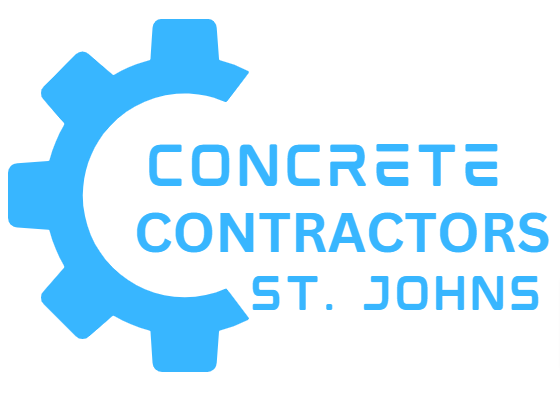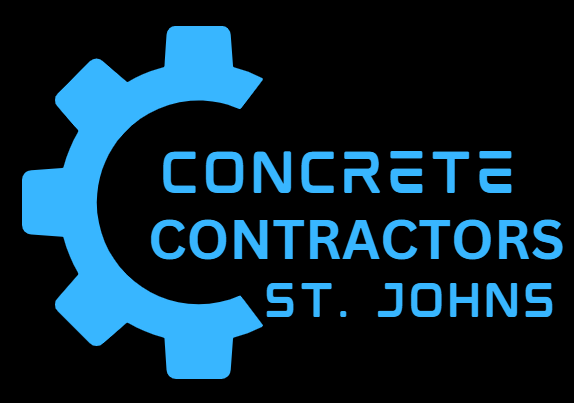Blog

Stamped concrete is a popular choice for homeowners in St. John’s, Newfoundland , who want the look of natural stone, brick, or tile without the high cost. It’s durable, versatile, and adds beauty to patios, walkways, driveways, and pool decks. However, like any outdoor surface, stamped concrete is exposed to the elements, making proper sealing essential. A quality seal not only protects your investment but also keeps your stamped concrete looking fresh and vibrant for years. Why Sealing Stamped Concrete Matters Stamped concrete is designed to withstand wear, but it’s still vulnerable to damage if left unprotected. Sealing offers several benefits: Moisture Resistance: Newfoundland’s wet and snowy climate can cause water to seep into unsealed concrete, leading to cracks when it freezes. Sealing blocks moisture absorption. Stain Protection: A sealed surface is less likely to absorb oil, grease, or spills from outdoor cooking and entertaining. Enhanced Color and Finish: Sealers bring out the richness of the stamped pattern and can give a glossy or matte finish, depending on your preference. UV Protection: Over time, the sun can fade colored stamped concrete. A UV-resistant sealer helps preserve the original look. Longevity: Sealed concrete is less prone to chipping, cracking, and surface wear. When to Seal Stamped Concrete New stamped concrete should be sealed once it has cured—typically 28 days after installation. After that, resealing every 2–3 years is recommended, depending on weather conditions and foot traffic. High-use areas, like driveways, may need sealing more often. Steps to Seal Stamped Concrete for Maximum Protection Clean the Surface Start by sweeping and washing the concrete with a mild detergent or power washer to remove dirt, grease, and debris. Allow it to dry completely before applying sealer. Choose the Right Sealer There are two main types of sealers: Acrylic Sealers: Affordable, easy to apply, and available in water- or solvent-based options. They’re great for enhancing color. Polyurethane or Epoxy Sealers: More durable and resistant to chemicals and abrasions but require professional application. Apply the Sealer Evenly Using a sprayer or roller, apply a thin, even coat. Avoid over-applying, as this can cause bubbling or cloudiness. Allow Proper Drying Time Most sealers need at least 24 hours to cure before you can walk on the surface, and 48–72 hours before heavy use, such as driving on a stamped driveway. Regular Maintenance Sweep regularly, wash occasionally, and reseal as needed to keep your stamped concrete protected and looking its best. Professional Sealing in St. John’s While some homeowners attempt DIY sealing, hiring a professional ensures even coverage, proper product selection, and long-lasting results. Professionals also know how to prepare the surface and apply the right type of sealer for Newfoundland’s unique climate. Final Thoughts Stamped concrete is a valuable investment that can enhance your home’s beauty and functionality. By sealing it properly, you’ll protect it against moisture, stains, UV rays, and everyday wear. With the right care, your stamped concrete will maintain its durability and elegance for many years to come. If you need expert stamped concrete sealing in St. John’s, Concrete Contractor St. Johns is here to help. Our team uses high-quality sealers and proven techniques to ensure maximum protection and a flawless finish for your surfaces.
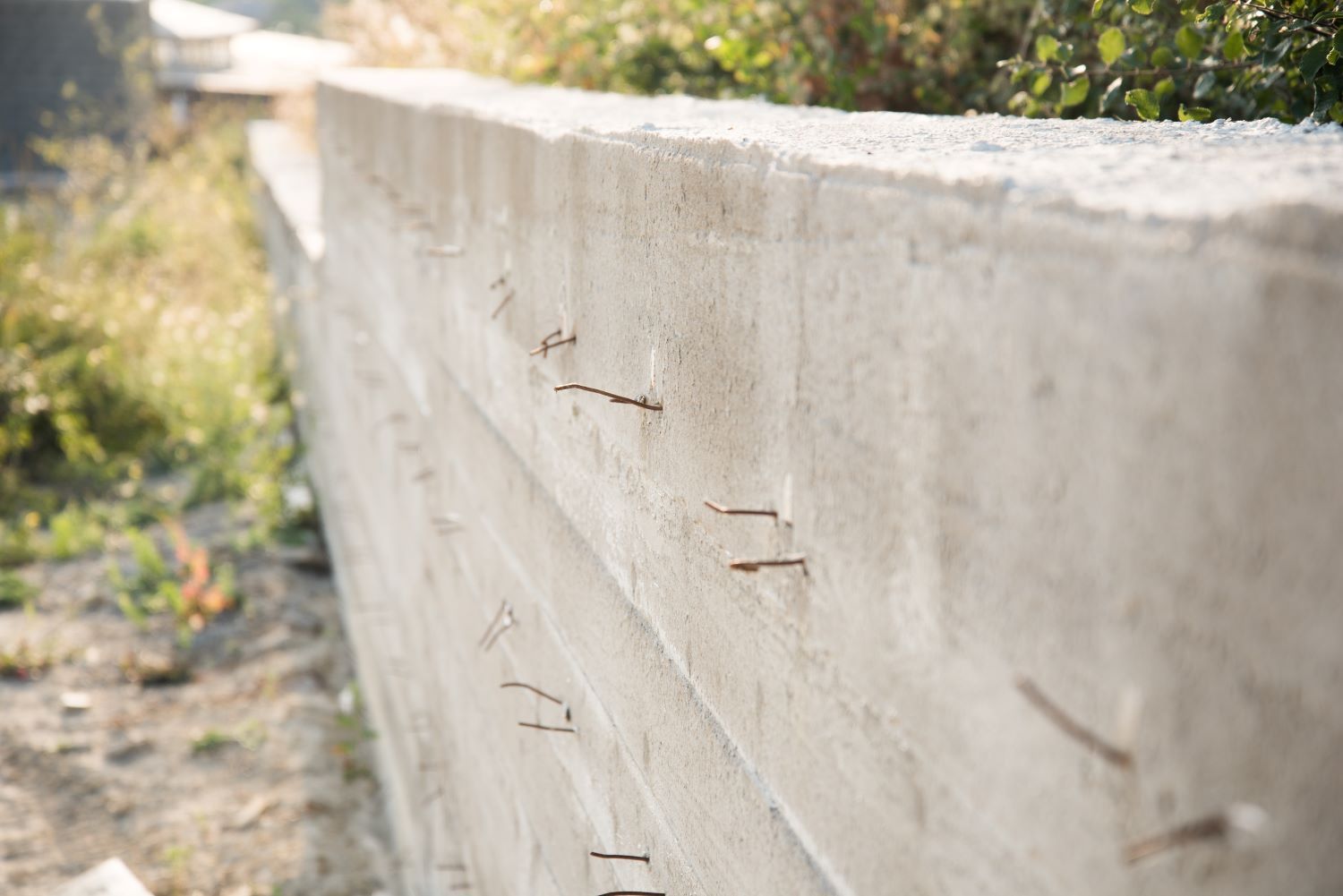
When homeowners in St. John’s, Newfoundland, think of retaining walls, they often picture a way to add beauty and structure to their yard. But beyond aesthetics, concrete retaining walls play an important role in outdoor safety . Whether you’re dealing with sloped terrain, heavy rain, or shifting soil, a properly built retaining wall can protect both your property and your family. 1. Preventing Soil Erosion Newfoundland’s weather can be unpredictable, with frequent rain, snowmelt, and strong winds that put pressure on outdoor landscapes. Sloped yards are especially vulnerable to soil erosion, which can wash away gardens, weaken foundations, and create hazardous uneven surfaces. A concrete retaining wall holds soil firmly in place. This prevents dangerous washouts or landslides in your yard. 2. Reducing Flood Risks Without a retaining wall, rainwater can flow freely through your property, pooling in low areas and creating slippery, unsafe surfaces. Concrete retaining walls are designed with proper drainage in mind, redirecting water away from your home and preventing flooding around outdoor living areas, walkways, and basements. 3. Preventing Property Damage Uncontrolled soil movement and water runoff don’t just pose safety concerns—they can also damage patios, driveways, and even your home’s foundation. A retaining wall acts as a protective barrier, keeping everything stable and reducing the chance of costly structural damage. 4. Creating Safer, More Usable Spaces Sloped yards can be difficult to use, and they sometimes create tripping hazards. By installing a retaining wall, you can level out sections of your yard, making them safer for children to play, easier for walking, and more functional for patios or garden beds. 5. Durability You Can Rely On Unlike wood or stone alternatives, concrete retaining walls are strong, long-lasting, and low-maintenance . This durability ensures your safety investment continues to protect your property year after year, even through Newfoundland’s harsh winters. Final Thoughts If you’re looking to make your outdoor space not only more attractive but also safer, a concrete retaining wall is a smart investment. At Concrete Contractor St. Johns , we specialize in designing and building retaining walls that combine strength, function, and style. Our team ensures that every project is built to last, giving you peace of mind and a safer home environment. 👉 Contact us today to learn how a retaining wall can improve safety and add value to your property in St. John’s, Newfoundland.
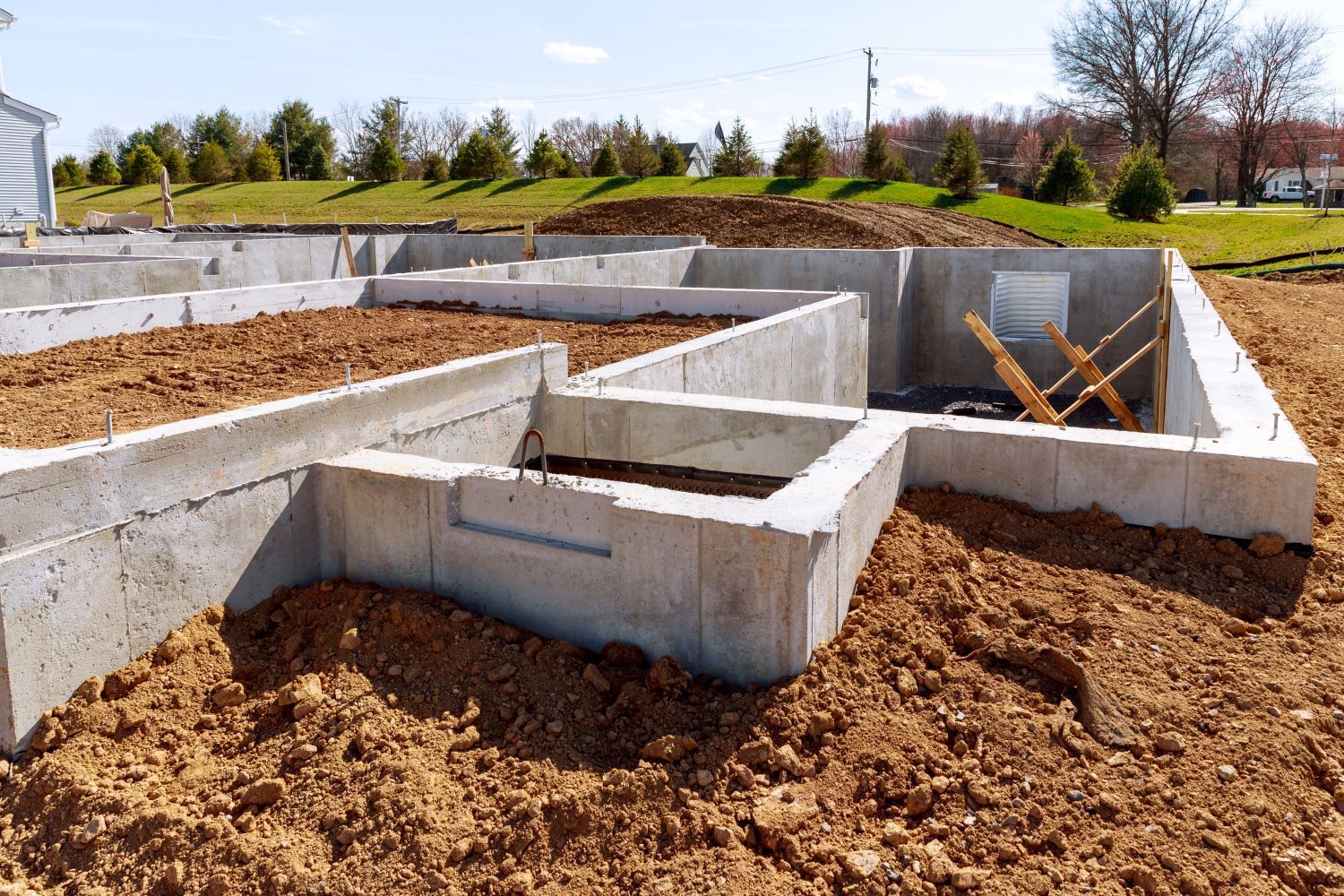
A strong foundation is critical for any home or commercial property. When it comes to concrete foundations , homeowners and builders in St. John’s, Newfoundland, often face a key decision: should they choose poured concrete or precast concrete foundations? At Concrete Contractor St. Johns , we guide our clients through this decision to ensure their projects are structurally sound, cost-effective, and long-lasting. What Is a Poured Concrete Foundation? A poured concrete foundation is created by mixing concrete on-site and pouring it into custom-built forms. Once it cures, it forms a solid, seamless base for your structure. Pros of Poured Concrete: Customizable: Can be shaped to fit unique property layouts and specifications. Seamless Structure: Reduces potential weak points where cracks can form. Durable: Properly poured and cured foundations can last decades. Adaptable: Suitable for a variety of soil types and weather conditions. Cons of Poured Concrete: Time-Consuming: Requires on-site mixing, forming, and curing. Weather Dependent: Rain or freezing temperatures can affect curing. Cost: Can be more expensive due to labor and material requirements. What Is a Precast Concrete Foundation? Precast concrete foundations are cast off-site in a controlled environment, then transported and installed on the property. Pros of Precast Concrete: Faster Installation: Components are manufactured off-site and can be installed quickly. Consistent Quality: Factory conditions ensure precise mixing, curing, and reinforcement. Reduced Labor On-Site: Less on-site construction work means fewer delays. Weather-Independent: Production is not affected by local weather conditions. Cons of Precast Concrete: Limited Customization: Shapes and sizes may be limited by factory production standards. Transportation Challenges: Large sections may be difficult or costly to transport to the site. Joint Weaknesses: Connections between precast sections can be potential points of weakness if not installed properly. Which Is Right for Your Project? Choosing between poured and precast concrete depends on several factors: Project Size and Design: Custom or irregular layouts often benefit from poured concrete. Timeline: Precast foundations can significantly reduce construction time. Budget: Poured foundations may have higher upfront costs, while precast can reduce labor expenses. Site Conditions: Soil type, access, and weather can influence which option is more suitable. At Concrete Contractor St. Johns , we evaluate your project needs, site conditions, and budget to recommend the foundation type that ensures maximum durability and long-term value. Final Thoughts Both poured and precast concrete foundations have their advantages and disadvantages. The best choice depends on your property, timeline, and design requirements. With professional guidance, you can make an informed decision that sets your home or building up for years of stability and safety. If you’re planning a new build or foundation project in St. John’s, contact Concrete Contractor St. Johns today. Our experienced team specializes in both poured and precast concrete foundations, providing expert installation and advice for homeowners and builders across Newfoundland.
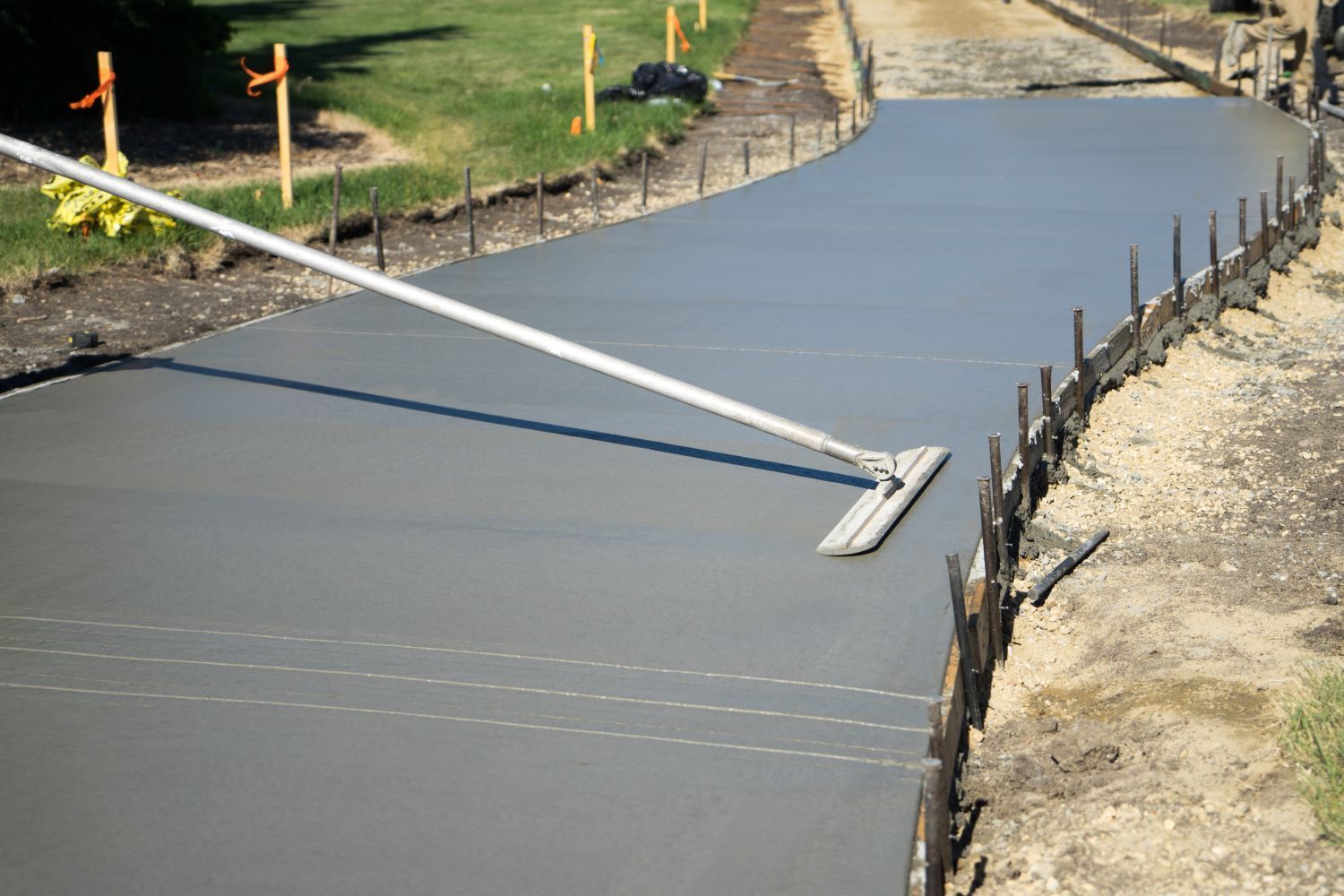
When it comes to public safety and accessibility, sidewalks play a much bigger role than most people realize. In St. John’s, Newfoundland, where weather conditions can be unpredictable, having well-designed concrete sidewalks isn’t just about curb appeal—it’s about ensuring the safety of everyone who uses them. At Concrete Contractor St. Johns , we understand how proper sidewalk planning and construction can prevent accidents, improve mobility, and enhance community spaces. 1. Preventing Trips and Falls Uneven or cracked sidewalks are a leading cause of pedestrian accidents. A well-built concrete sidewalk with a smooth, even surface significantly reduces the risk of tripping hazards. Professional installation ensures the correct slope and drainage, preventing water pooling and ice buildup—especially important during Newfoundland’s cold winters. 2. Improving Accessibility A safe community is an accessible one. Properly designed sidewalks accommodate all users, including people with strollers, wheelchairs, or mobility aids. Features like curb ramps, adequate width, and non-slip surfaces make concrete sidewalks safer for everyone, regardless of age or ability. 3. Enhancing Visibility Sidewalks should be clearly visible and well-lit to promote safety at night. Light-coloured concrete can reflect street lighting better than darker surfaces, helping pedestrians see obstacles and allowing drivers to notice foot traffic more easily. 4. Reducing Weather Hazards In St. John’s, snow, ice, and heavy rain are common challenges. A professionally installed concrete sidewalk can be designed with proper grading to prevent puddles, minimize ice formation, and allow for easier snow removal—reducing slip hazards in winter. 5. Supporting Community Safety Well-designed sidewalks encourage more walking, which means more people are out and about. This increased foot traffic can deter crime, improve neighbourhood watch, and create safer, more connected communities. Why Professional Installation Matters DIY or poorly constructed sidewalks may save money upfront, but they often fail to meet local safety codes and durability standards. At Concrete Contractor St. Johns , we use high-quality materials, proper reinforcement, and expert finishing techniques to ensure your sidewalks last for decades—while keeping your family, customers, and community safe. Ready to make your sidewalks safer and stronger? Contact Concrete Contractor St. Johns today for professional concrete sidewalk installation and repair services in St. John’s, Newfoundland.

Your driveway is more than just a place to park—it’s one of the first things people notice about your home. Over time, however, Newfoundland’s harsh weather can take its toll on concrete surfaces. If your driveway is cracked, stained, or looking worse for wear, the big question becomes: Should you resurface it, or is it time to replace it entirely? At Concrete Contractor St. Johns , we help homeowners make the right decision based on condition, budget, and long-term value. Here’s how to tell which option is best for your driveway. 🔍 What Is Concrete Resurfacing? Concrete resurfacing involves applying a thin overlay to the top of your existing driveway. This overlay bonds with the surface, covering minor cracks, stains, and imperfections while giving the driveway a fresh new look. Best for: Surface-level cracks Discoloration or fading Minor pitting or scaling Homeowners on a budget 💣 What Is Concrete Replacement? Replacement is the complete removal and reinstallation of your concrete driveway. It’s more invasive and expensive, but necessary when the structural integrity of the slab is compromised. Best for: Large or deep cracks Major sinking or heaving Severe surface erosion Driveways older than 25–30 years 🧱 Resurface If... ✅ The concrete is mostly intact , with only cosmetic damage ✅ Cracks are less than 1/4-inch wide and not deep ✅ The slab is still level and drains properly ✅ You’re looking for a cost-effective refresh ✅ You want to change the look with a stamped or decorative finish Bonus: Resurfacing can give your driveway a brand-new look without the cost of tearing it out. 🚫 Replace If... ❌ Cracks are wide, deep, or growing ❌ There’s significant settling, heaving , or uneven sections ❌ The base beneath the slab is unstable or compromised ❌ Previous resurfacing jobs have already failed ❌ You want to make structural changes , such as widening the driveway In these cases, resurfacing is only a temporary fix—and the underlying issues will return. 💬 Local Tip from St. John’s Pros Due to Newfoundland’s freeze-thaw cycles , even minor cracks can grow quickly if not addressed properly. If you're unsure about your driveway’s condition, it's best to get a professional inspection. 🔨 Let’s Make the Right Call Together At Concrete Contractor St. Johns , we specialize in both resurfacing and full driveway replacement . We’ll assess your concrete, explain your options clearly, and recommend the solution that makes the most sense for your home and budget. 📍 Serving St. John’s, Mount Pearl, Paradise , and surrounding areas. Need a quote or on-site assessment? Reach out to Concrete Contractor St. Johns today—we’ll help restore the strength, safety, and beauty of your driveway.

Concrete pads are one of the most versatile and durable additions you can make to your home. Whether you're upgrading your outdoor space or creating a stable base for a new structure, these solid surfaces offer a long-lasting foundation that withstands Newfoundland's tough weather conditions. At Concrete Contractor St. Johns , we often recommend concrete pads for homeowners looking for simple, effective improvements that add value and function. Here are the top uses for concrete pads around the home: 1. Shed Foundations One of the most common uses for a concrete pad is to create a level, weather-resistant base for a backyard shed. Whether you're storing tools, gardening supplies, or seasonal gear, a concrete foundation keeps everything off the ground, reducing moisture damage and pest problems. 2. Hot Tub or Spa Bases Planning to add a hot tub to your yard? You’ll need a sturdy, level pad to support the weight of the water and equipment. A reinforced concrete pad offers the strength and stability needed to prevent shifting, settling, or cracks over time. 3. Air Conditioner or Generator Pads Mechanical units like air conditioners, heat pumps, or standby generators should never sit directly on soil. A concrete pad keeps them elevated, dry, and securely in place — essential for proper function and longevity. 4. BBQ or Outdoor Kitchen Stations If you're building an outdoor cooking area, a concrete pad is the perfect foundation. It provides a fire-resistant surface that’s easy to clean and helps define the space for your grill, prep counters, or even a full kitchen setup. 5. Driveway Extensions Need more parking space? A concrete pad can be added beside your existing driveway to accommodate an extra vehicle or trailer. It’s a fast and cost-effective solution that doesn’t require a full driveway overhaul. 6. Basketball Hoops and Play Areas For families, a concrete pad can double as a play surface. Whether you're installing a basketball hoop or need a smooth space for scooters and bikes, a concrete pad offers safety, durability, and low maintenance. 7. Patios and Fire Pit Bases Concrete pads are perfect for creating cozy patio areas or a level base for a fire pit setup. They're weatherproof and can be customized with stamping or staining to enhance aesthetics. Need a Concrete Pad in St. John’s? At Concrete Contractor St. Johns , we specialize in planning and installing high-quality concrete pads tailored to your needs. Whether it's a weekend project or part of a larger home improvement plan, we’ll make sure it’s done right — level, strong, and built to last. Contact us today for a free consultation and find out how a simple concrete pad can transform your home.
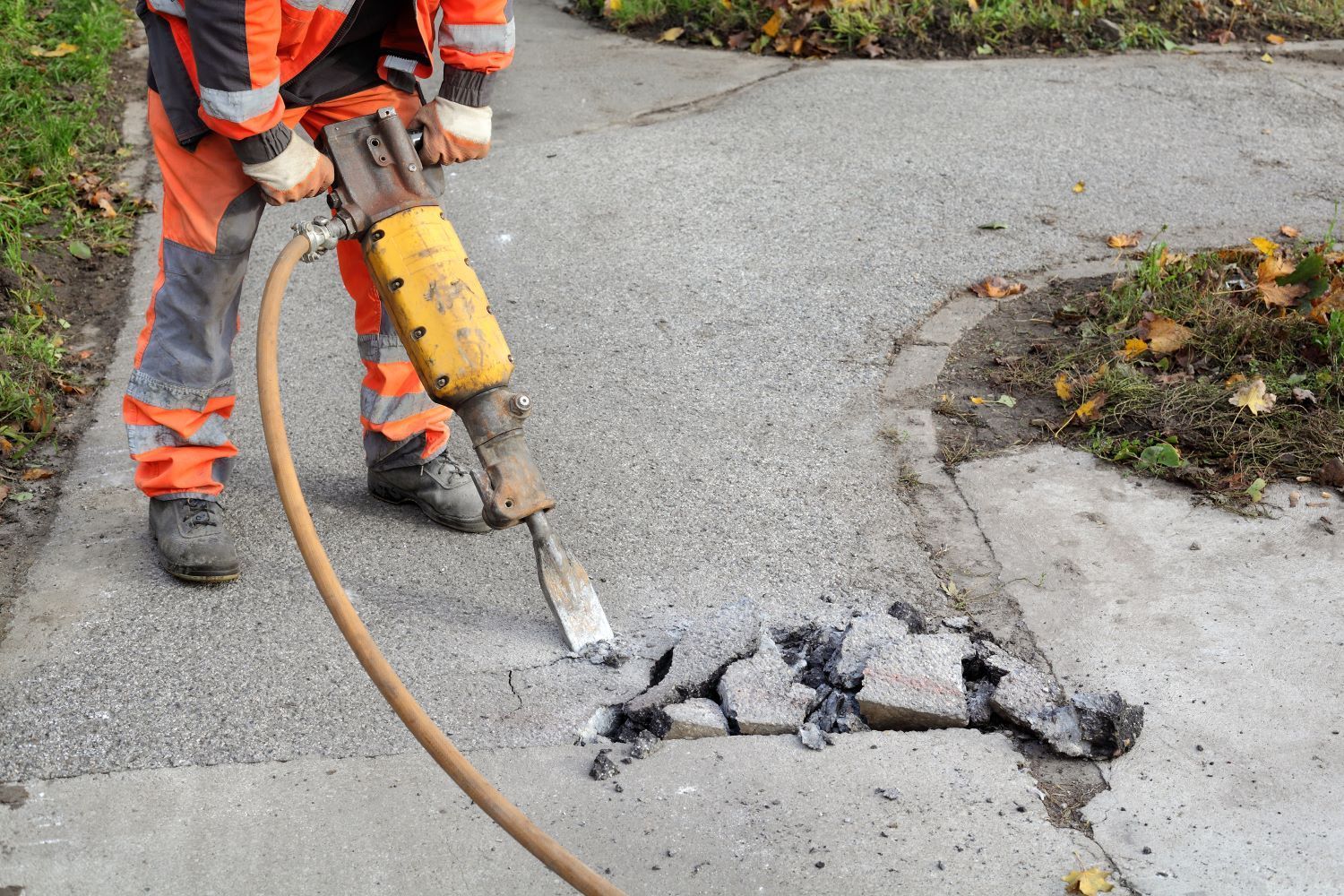
Concrete is strong, durable, and built to last—but that doesn’t mean you can set it and forget it. While it’s one of the most resilient building materials available, concrete still needs regular maintenance to perform at its best—especially in a place like St. John’s, Newfoundland , where coastal weather and freeze-thaw cycles take a toll on even the toughest surfaces. At Concrete Contractor St. Johns , we often remind homeowners and property managers that routine maintenance is key to extending the life and appearance of driveways, patios, walkways, and foundations. In this article, we explain why concrete care matters , what to look out for, and how to protect your investment long-term. 🧱 Why Concrete Needs Maintenance Concrete is porous and susceptible to water infiltration, cracking, and surface wear over time. Without proper upkeep, you may experience: Cracks that expand and worsen during winter Discoloration from salt, oil, and other stains Erosion or pitting caused by water or de-icers Moss and mildew buildup in damp, shaded areas In climates like Newfoundland’s—where freezing temperatures, high humidity, and ocean air combine—your concrete surfaces are constantly exposed to the elements. That makes proactive maintenance essential . 🔍 Common Concrete Issues to Watch For Keep an eye out for these early signs of trouble: ✅ Hairline Cracks These are often cosmetic at first but can widen with moisture and freezing temperatures. ✅ Spalling (Surface Chipping) A sign that water is penetrating the surface and the concrete is deteriorating. ✅ Stains from Oil, Rust, or De-Icers Besides being unsightly, some stains can break down concrete over time. ✅ Sinking or Uneven Slabs Often due to poor drainage or shifting ground, and a potential safety hazard. 🧰 How to Maintain Your Concrete the Right Way 1. Clean Regularly Use a broom and mild detergent or pressure washer to remove dirt, debris, and mildew. This helps prevent staining and surface breakdown. 2. Seal Every 2–3 Years Concrete sealers protect against moisture, salt, and stains. In Newfoundland, sealing is especially important before winter to prevent freeze-thaw damage. 3. Repair Cracks Promptly Filling cracks early prevents water intrusion and structural damage. A small fix now can save you thousands later. 4. Avoid Harsh Chemicals Steer clear of strong de-icers or acids. Use sand or eco-friendly de-icing products instead. 5. Ensure Proper Drainage Make sure water flows away from your concrete surfaces to avoid pooling and erosion. 🏡 Maintenance for Different Surfaces Driveways : Seal regularly, avoid parking heavy equipment, and address oil spills quickly. Patios & Walkways : Keep surfaces clean and level to avoid tripping hazards. Foundations : Inspect for cracks, ensure gutters direct water away from the base. Decorative or Stamped Concrete : Use sealers that preserve the finish and colour. 💡 When to Call the Pros If you notice extensive cracking, sinking, or signs of water damage, it’s best to contact a professional concrete contractor . At Concrete Contractor St. Johns , we can assess the issue and recommend long-lasting solutions—from crack repair and mudjacking to full resurfacing or replacement. 📞 Keep Your Concrete in Top Shape with Help from the Experts Remember: concrete is durable, not indestructible . With regular care and professional support, you can extend its life, improve curb appeal, and avoid costly repairs. If you have questions or want to schedule a maintenance check in St. John’s or surrounding areas , get in touch with Concrete Contractor St. Johns today. We’re proud to help local homeowners and businesses protect their property—one slab at a time.
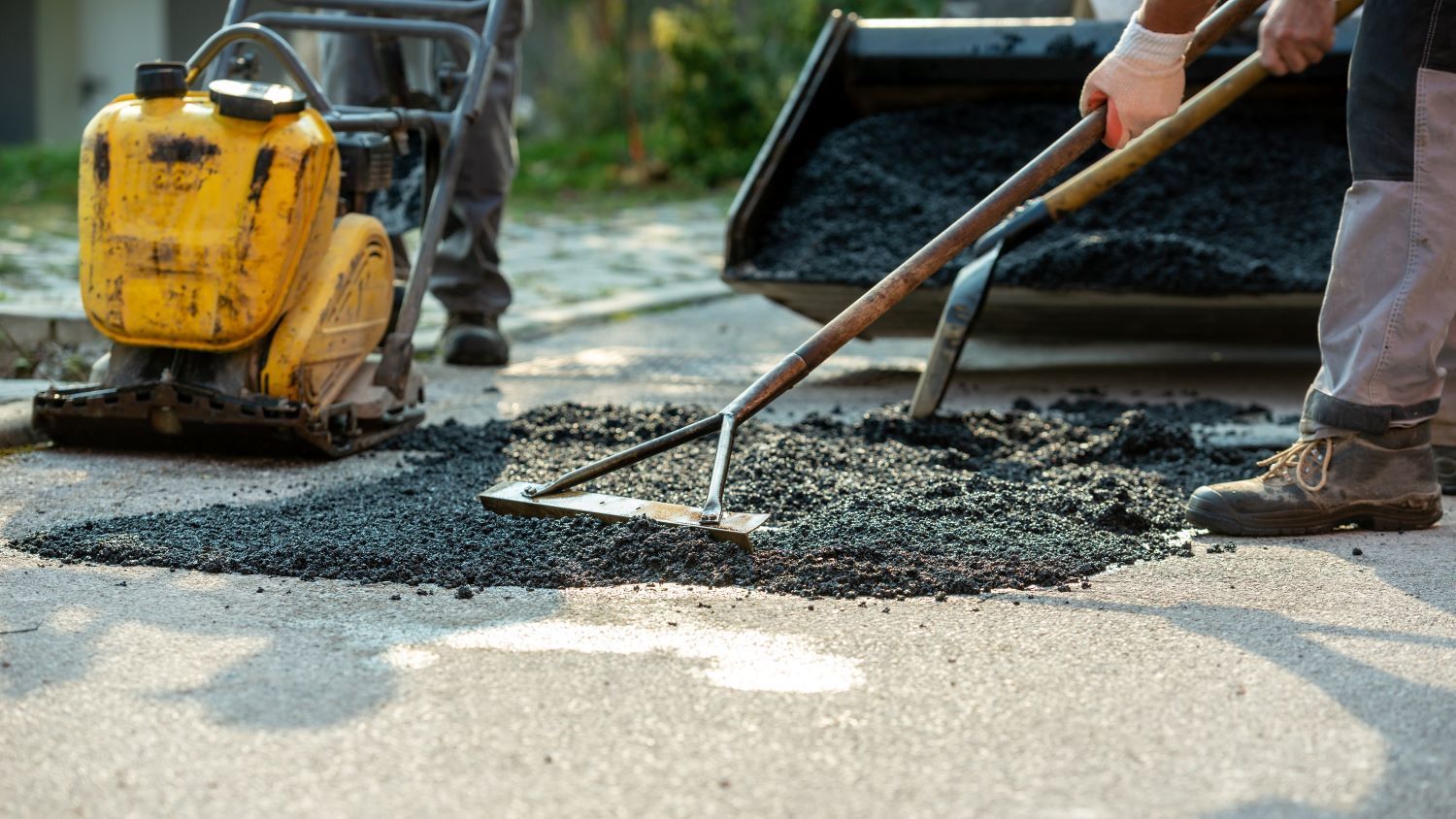
When you invest in asphalt paving —whether for a driveway, parking lot, or roadway—you want to know it will last. Asphalt is known for its durability, flexibility, and cost-effectiveness , but just like any surface, it’s not indestructible. In Newfoundland's ever-changing climate, knowing what to expect from your asphalt surface can help you plan maintenance and extend its lifespan. At Concrete Contractor St. Johns , we’ve worked with home and business owners across the province to install and maintain high-quality asphalt surfaces . In this article, we break down how long asphalt paving lasts , the factors that influence its longevity, and how you can keep it looking great for years. 🛣️ Typical Lifespan of Asphalt Paving On average, properly installed asphalt paving lasts between 15 and 25 years . With consistent maintenance and favorable conditions, some asphalt surfaces can last even longer. However, in areas like St. John’s , where winter weather, freeze-thaw cycles, and salt use are common, regular upkeep is especially important. ⏱️ What Impacts the Lifespan of Asphalt? Several key factors affect how long your asphalt surface will last: 1. Installation Quality A properly graded base, correct asphalt thickness, and skilled workmanship are essential to a long-lasting result. Poor installation leads to early cracking, sinking, and water damage. 2. Climate and Weather Newfoundland's harsh winters and temperature swings cause asphalt to expand and contract, which can lead to cracking. Heavy snowfall, ice, and road salt can also accelerate deterioration. 3. Traffic Load Driveways used by passenger cars will last longer than commercial parking lots exposed to heavy trucks and constant traffic. 4. Drainage Poor water drainage is one of the biggest threats to asphalt. Water that sits or seeps underneath the surface will weaken the base layer and cause structural issues. 5. Maintenance Routine Routine care like sealcoating, crack filling, and patching helps protect asphalt and significantly extends its life. 🧰 What to Expect Over Time ✅ Year 0–5: Fresh and Flexible Newly paved asphalt is smooth, dark, and slightly flexible. Minor surface wear may occur but typically no major issues. ⚠️ Year 6–10: Early Signs of Wear Small cracks may appear, especially in high-traffic areas or around edges. Sealcoating every 2–3 years helps reduce oxidation and wear. 🛑 Year 11–20: Repair and Reinforce Surface may show signs of fading, cracking, or minor potholes. Preventive repairs like patching and overlays can extend life. 🔄 Year 20+: Consider Resurfacing or Replacement Surface may become brittle or uneven. Depending on wear level, resurfacing (adding a new asphalt layer) or full replacement may be necessary. 🧱 Extend the Life of Your Asphalt with These Tips Sealcoat every 2–3 years Fill cracks early to prevent water intrusion Clean regularly to remove debris, oil, and salt Ensure proper drainage away from paved surfaces Address potholes promptly before they spread 🏗️ Trust the Pros at Concrete Contractor St. Johns Whether you’re planning a new asphalt project or need help maintaining an existing surface, Concrete Contractor St. Johns has the expertise and local knowledge to do the job right. We understand the unique challenges of paving in Newfoundland’s climate and offer custom solutions that keep your surfaces strong and safe. 📞 Contact us today for a free consultation or quote on your asphalt paving or maintenance needs in St. John’s, NL .
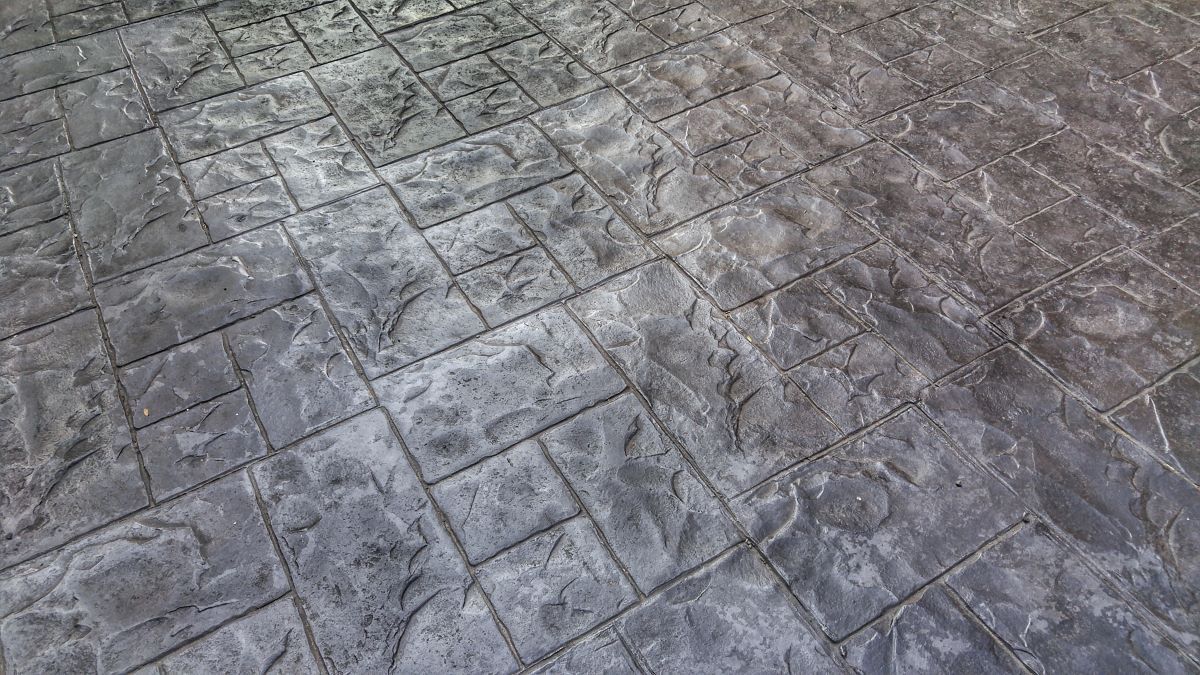
Concrete surfaces like driveways, patios, and walkways are built to last—but they’re not completely maintenance-free. One of the most important steps in preserving concrete is sealing , which protects against moisture, stains, cracking, and surface wear. Over time, however, even the best sealers break down, especially in places like St. John’s, Newfoundland , where freeze-thaw cycles, heavy rain, and salt exposure can take their toll. So how do you know when it’s time to reseal your concrete? At Concrete Contractor St. Johns , we’ve put together this quick guide to help you spot the signs before damage sets in. 🔍 1. Water No Longer Beads on the Surface The easiest test? Pour a small amount of water on your concrete surface. If the water beads up , your sealer is still doing its job. If it absorbs quickly , your concrete is likely unprotected and should be resealed soon. Unsealed concrete allows water to seep in, which can lead to cracks and surface erosion—especially during Newfoundland’s long winters. 🎨 2. The Surface Looks Dull or Faded A fresh seal gives concrete a clean, slightly glossy finish (unless a matte product was used). If your once-bright stamped patio or sleek driveway now looks dull, chalky, or faded , it’s probably due to UV exposure and surface wear—and a clear sign it’s time to reseal. 🧱 3. You Notice Cracking or Flaking While sealers won’t stop deep structural cracks, they help prevent surface cracking, flaking, and spalling caused by moisture penetration and freeze-thaw damage. If you’re starting to see surface degradation—especially around corners or expansion joints—don’t wait. Resealing now can help slow further damage and avoid costly repairs later. 🛑 4. Stains Are Becoming Harder to Remove If your concrete used to resist oil, grease, or rust stains but now absorbs them like a sponge, the sealer has likely worn off. Once unprotected, concrete can stain easily—especially from vehicles, salt, or fallen leaves. A fresh coat of sealer creates a barrier that makes cleaning easier and protects against long-term discoloration. 🗓️ 5. It’s Been 2–3 Years Since Your Last Sealing Even if your concrete still looks okay, most sealers begin to lose effectiveness after 2 to 3 years , depending on the product used, foot or vehicle traffic, and exposure to the elements. In Newfoundland’s climate, more frequent resealing may be necessary to combat winter weather and salt damage. 🛠️ Resealing: A Simple Step with Big Benefits Routine resealing not only protects your concrete but also: Enhances its appearance Reduces long-term maintenance Helps prevent costly repairs Extends the life of your driveway, patio, or walkway 🧰 Leave It to the Pros at Concrete Contractor St. Johns While DIY sealing kits are available, improper application can lead to poor results—or even trap moisture beneath the surface. At Concrete Contractor St. Johns , we use high-quality sealers and proven techniques to ensure your concrete looks great and stays protected in our harsh local climate. Whether your surface is dull, cracked, or just due for a refresh, we’ll assess its condition and recommend the right sealing solution. 📞 Contact us today to schedule a concrete assessment or get a quote for resealing services in St. John’s, Newfoundland.
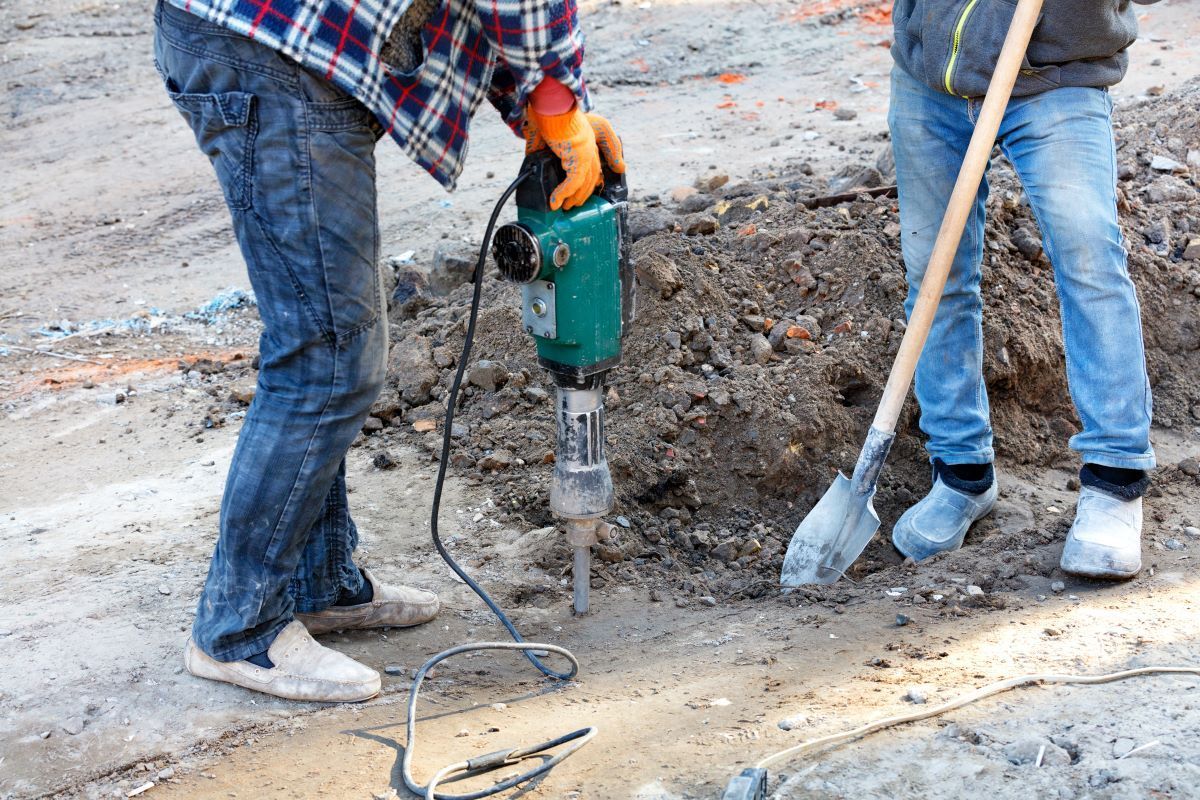
Uneven sidewalks, sunken driveways, or tilting patios can be more than just an eyesore—they’re a tripping hazard and a sign of structural issues below the surface. If you're a homeowner or property manager in St. John’s facing these problems, you might be dreading the cost of tearing out and replacing concrete. But there’s a smarter, faster, and more affordable solution: mudjacking . At Concrete Contractor St. Johns , we specialize in mudjacking —a cost-effective method of concrete repair that can save you thousands over full replacement. Here’s how it works and why it’s a smart investment for property owners across Newfoundland. 💡 What Is Mudjacking? Mudjacking, also known as slabjacking or concrete lifting , is the process of raising and leveling sunken concrete by pumping a specialized slurry underneath the slab. The mixture—usually made of water, soil, and cement—fills the empty spaces caused by soil erosion or settling and lifts the slab back to its original position. This method is commonly used to fix: Driveways Sidewalks Patios Garage floors Steps and porches Pool decks 💰 The Cost-Saving Advantage One of the biggest benefits of mudjacking is its affordability. Compared to full concrete replacement, mudjacking typically costs significantly less—often between $5 to $8 per square foot , while replacement can range from $10 to $20 or more per square foot . In addition to lower costs, mudjacking is much quicker. Most projects can be completed in just a few hours, while concrete replacement may take several days or even a full week due to demolition, forming, pouring, and curing times. There’s also far less disruption involved. Mudjacking requires only small access holes and minimal equipment, while replacement often involves noisy machinery, removal of old slabs, and restricted access to the area during curing. By choosing mudjacking, homeowners in St. John’s can cut their repair costs in half or more , especially when dealing with large patios, driveways, or walkways. 🕒 Fast, Non-Invasive Repairs In Newfoundland’s busy construction season, time is valuable. Mudjacking is not only affordable—it’s fast . Most jobs are completed in just a few hours, and the area is ready for use by the next day. There’s no need to tear out landscaping, wait for concrete to cure, or block off access to your driveway for days. 🌨️ Built for St. John’s Climate Here in St. John’s, freeze-thaw cycles are tough on concrete. Over time, water can erode the soil beneath your slabs, causing them to sink or shift. Mudjacking addresses the underlying cause —voids in the soil—by filling and compacting them, preventing further settling. It’s also more environmentally friendly than full replacement since it reuses your existing concrete and produces minimal waste. 🛠️ When Is Mudjacking NOT the Best Option? While mudjacking works in many cases, there are a few exceptions: Severely cracked or crumbling concrete may still require replacement. Structural concrete (like foundation walls) may need different repair methods. Slabs that continue to sink after multiple lifts may need soil stabilization. A professional assessment can help determine the right solution for your property. ✅ The Bottom Line: Save Now, Avoid Bigger Costs Later Don’t wait until your uneven concrete becomes a major liability. Mudjacking is a fast, effective, and budget-friendly way to restore safety and value to your property. At Concrete Contractor St. Johns , we bring years of experience and local knowledge to every repair. We understand Newfoundland’s soil conditions, seasonal shifts, and how to lift and level your slabs with precision. 📞 Contact us today for a free estimate—and discover how much you can save with mudjacking.
